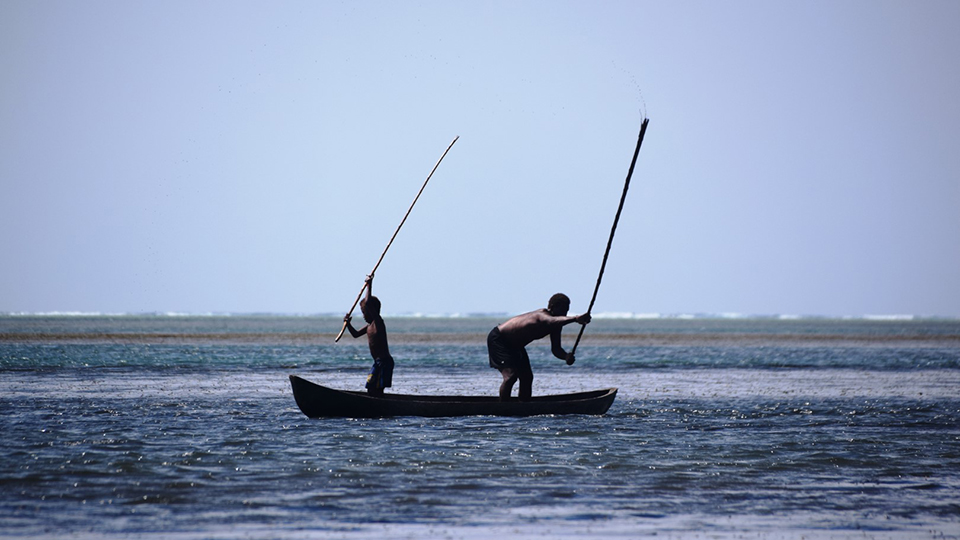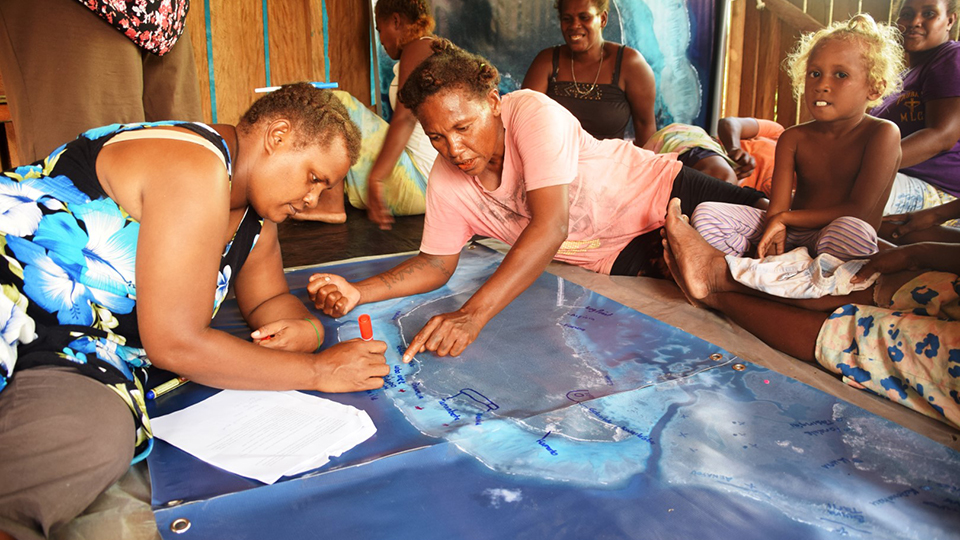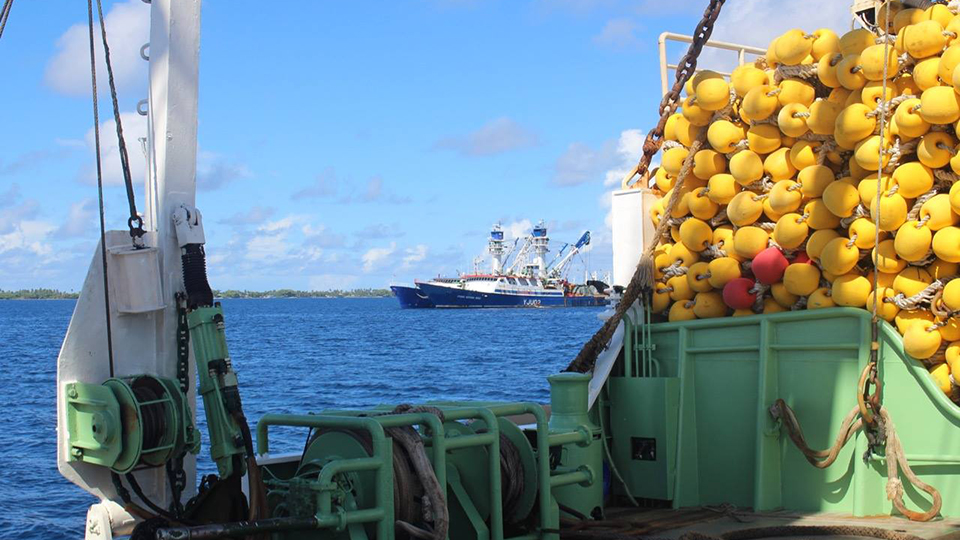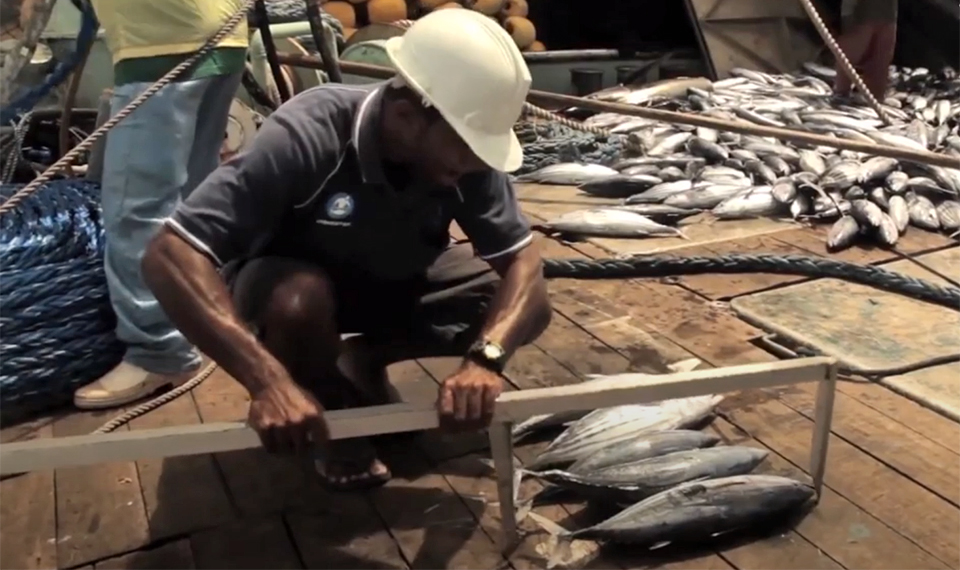Opinion: Calls for a new area-based conservation target must not bulldoze the Indigenous roadmap that has allowed small island nations to sustainably govern and manage a hundred percent of their coastal and marine territories, improve their lives and conserve fisheries
First published on 04/15/2021, and last updated on 02/11/2025
Some countries and major non-governmental organizations are promoting the ‘30 by 30’ campaign to ‘protect and conserve’ at least 30 percent of the planet – including the ocean – by 2030. While this might sound like a simple solution, it is likely to distract from addressing most of the major threats while prejudicing some of the best solutions developed by Indigenous peoples, local communities, and Small Island Developing State (SIDS).
As currently written in the ‘zero draft’ of the post-2020 global biodiversity framework, this target contains no reference to human rights, Indigenous peoples and local communities, governance or equity, all of which are crucial components of area-based conservation, irrespective of the broader issues with the spatial target. It is important not to fall for this catchy campaign and stay focused on solutions for particular threats that together stand a better chance of achieving holistic governance of one hundred percent of ocean areas.

Many of the Pacific countries recognize the customary rights communities who traditionally govern the fisheries upon which they depend. Fishing activity by local community members in Lau Lagoon, Malaita, Solomon Islands is pictured here. Photo © Jan van der Ploeg
For inspiration of how to approach ocean conservation differently, we can learn from the Pacific island nations. Many of the Pacific countries recognize the customary right of communities who traditionally governed the fisheries upon which they depend, and these countries are developing modern fisheries governance based on the rights of local communities. In much the same way, several “large ocean – small island states” in the Pacific have developed successful and sustainable offshore fisheries governance.
The Pacific SIDS are faced with the challenge of sustainably governing vast ocean areas and some of the most biodiverse inshore habitats on the planet – getting this right is a matter of life and death for societies so intimately linked to the ocean. Also, these developing nations have to achieve this governance with minuscule budgets and few staffs, in 2015 these countries had an annual budget of US$15,600,000 to govern and manage 17.5 million km2, only 20% of which was dedicated to managing coastal fisheries upon which communities rely for food.
Communities have led the way in demonstrating that effective inshore and coastal fisheries governance is possible using combinations of traditional and modern approaches. Many communities are practicing this already and nearly a thousand have been recorded as doing so – building on local rights is undoubtedly the major and most effective tool for most of the Pacific Islands’ communities.

Building fisheries governance on local rights is undoubtedly the major and most effective tool for most of the Pacific Islands’ communities. In this photo, Fumato Berries and Kwakena are busy at a Lau Lagun focus group discussion in the Solomon Islands. Photo © Jan van der Ploeg
The ratification of the United Nations Convention on the Law of the Sea (UNCLOS) gives Pacific SIDS similar rights to their ocean, providing not only the rights of exploitation over natural resources in their Exclusive Economic Zones (EEZs) up to 200 nautical miles from the shore but also the obligation of safeguarding the marine environment. And at least some Pacific SIDS seems on the right path to success in sustainably governing their EEZs.
One of the major resources for Pacific Islanders is the migratory tuna. Over half the world’s tuna stocks, worth billions of dollars, swim through the contiguous EEZs of just eight of these island countries. In 2010 the stocks of the major tuna species were considered to be fully exploited by distant-water fishing states with no potential for increased catches. The huge quantities of tuna extracted by foreign fishing fleets left only five percent of the value staying with the license-issuing Pacific countries. The regional and international governance mechanisms afforded little opportunity for these eight Pacific SIDS to assert more control as their voice was drowned out by the many other countries and interests at play in these fora.
Eight of the Pacific SIDS (Micronesia, Kiribati, Marshall Islands, Nauru, Palau, Papua New Guinea, Solomon Islands, and Tuvalu) worked together under the auspices of the Nauru Agreement to use their EEZs as one big ocean area for collaborative governance of tuna – more or less a cartel. The Parties to the Nauru Agreement (PNA), operating with a small secretariat, opted for a management tool called Vessel Day Scheme that regulates fishing effort rather than the quota, which is far easier to monitor and control using satellite data supplemented by the observers placed in all fishing vessels.
Tuna fishing companies that wish to access the tuna in these rich fishing grounds must bid for fishing days (Vessel Day Scheme) as well as abide by any sustainable fishing rules those nations choose to impose. Because of tactics often employed by these fleets to sidestep national controls by fishing for the migrating tuna just outside the EEZ in the High Seas, the rules include provisions that prohibit this – in effect imposing national conservation in international waters.
The Parties to the Nauru Agreement (PNA) govern and manage the world’s largest sustainable tuna purse seine fishery. The management tool Vessel Day Scheme (VDS) used by the PNA regulates fishing effort rather than the quota which makes monitoring and control far easier.
This locally-led arrangement for transboundary governance of tuna has successfully demonstrated that devolving power to those most affected by the state of the resources has not only achieved sustainable stocks but increased the value that the “stewards” receive from 5% of the landed value to 25% – amounting to around half a billion dollars a year. This represents a significant proportion (up to 70% in some cases) of the national revenue of these “large ocean – small island states” – the opportunity to impose any other rules relating to bycatch or other conservation measures is huge.

PNA is an example of how a community of nations with a common vision can find sustainable governance and management methods that meet objectives to sustain their environmental commons. Needless to say, the approach met with considerable opposition from some distant water fishing nations, including some that otherwise call themselves development partners.
It may be that these foreign nations will have the last laugh if efforts to promote the closure to fishing of 30% of national waters succeed thereby removing significant proportions of the EEZs from the shared community governance system. The effect of reducing the area that the PNA “cartel” has to offer on the prices and rules the PNA countries can impose has not been assessed nor the likelihood that effort will shift to less controlled areas in the high seas where only rich corporations/nations will benefit, ultimately breaking the PNA system.
The large investments required to operate competitive industrial purse seine vessels has always represented a challenge to the Pacific SIDS but the PNA approach shows that there are ways to vastly improve the benefits of licensing or partnership arrangements with the distant water fishing nations.

The PNA system of fisheries and ocean governance may also be used as an inspiration for the conservation of the high seas, the areas outside Exclusive Economic Zones. Photo © PNA Secretariat
We argue that the imposition of a single management tool (marine protected areas and other area-based conservation measures) and the stipulation of a spatial target (30%) fails to recognize the vitally important and biodiverse inshore areas that local people depend on for daily livelihoods and are best placed to manage. In the broader context, recognizing different problems require different solutions. Non-Western cultures and value systems may have far more to offer than the largely failed Fortress Conservation approaches.
The PNA system may also be used as an inspiration for the conservation of the high seas, the areas outside EEZs. In addition to the post-2020 global biodiversity framework, governments are negotiating another international agreement on biodiversity in areas beyond national jurisdiction and the community of Pacific Island countries may justifiably argue for increased rights of stewardship in the High Seas areas adjacent to their EEZs.
The major threats to the Pacific Ocean that are often cited relate to climate change (temperature rise, ocean acidification, de-oxygenation) or more direct human impacts such as pollution and poor regulation of current (fishing, logging, mining) or future extractive industries (such as deep-sea mining). We have the solutions to Pacific Island overfishing as demonstrated above – let us not allow the international community and local governments to shirk their duty in addressing the other far greater threats; approaches can be found but not if finance and attention are wasted on promoting fundamentally flawed approaches.
Disclaimer: This content does not necessarily reflect the views of the ICCA Consortium as a whole
